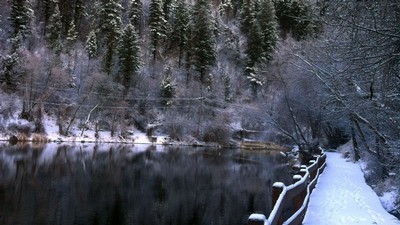USU Scholars Forge Unprecedented Common Ground in River Classification
USU alum Alan Kasprak, USGS postdoc, is co-lead author on a paper describing surprising common ground on river classification in 'PLOS ONE.'
How do you describe a river? By its shape? By how much water flows through it? By the plants and animals that live in and around it?
For years, scientists have employed varied classification systems to distill complex geomorphic, hydrologic and ecological information about rivers into simple descriptions of their channels and floodplains. The utility of these classification systems, frequently used to assess stream health and to manage and restore rivers, is hotly contested among river scientists. That’s because these approaches often rely on simple measurements of a river’s shape to infer the processes, like sediment transport and bank erosion, that happen within the watershed. Despite this debate, direct comparisons between frameworks are exceedingly rare.
For the first time, Utah State University scientists and research partners compared four popular stream classification frameworks at the watershed scale and demonstrated significant common ground among the divergent approaches. Their findings appear in the article, “The Blurred Line Between Form and Process: A Comparison of Stream Channel Classification Frameworks,” in the March 16, 2016, online edition of PLOS ONE.
The researchers undertook the endeavor as part of a short course led by the USU-based Intermountain Center for River Rehabilitation and Restoration.
“We realized, for all the debate about which classification framework is ‘best,’ the scientific community lacked a clear understanding of just how often the approaches agreed or disagreed, and what the reasons for this might be,” says USU alum Alan Kasprak PhD’15, postdoctoral research geologist with the U.S. Geological Survey in Flagstaff, Ariz. and co-lead author on the paper.
Kasprak, USU scientists Nate Hough-Snee, Reid Camp, Martha Jensen, Joe Wheaton and Nick Bouwes, as well as Gary Brierley of the University of Auckland, Kirstie Fryirs of Macquarie University, Dave Rosgen of Wildland Hydrology, and Tim Beechie and Hiroo Imaki of the National Oceanic and Atmospheric Administration, applied the River Styles Framework, the Rosgen Classification System and Natural Channel Classification, along with a form of statistical classification, within Oregon’s Middle Fork John Day River Basin.
“Our study site is an intensively monitored watershed in the United States’ Pacific Northwest,” says Hough-Snee, doctoral student in USU’s Department of Watershed Sciences and the USU Ecology Center, EPA STAR Fellow and co-lead author of the paper. “Across the watershed, the classifications’ outputs were in agreement 80 percent of the time.”
According to Hough-Snee and Kaprak, these classifications, often pitted against each other for their trade-offs in data requirements, user expertise and the time and costs required to undertake a given classification, show complementary groups of stream types across frameworks.
“As a river research community, we’ve used different terminology to characterize streams that look the same,” Hough-Snee says. “The processes that lead to these sets of forms are often very similar, so we should emphasize these similarities, rather than dwelling on subtle, semantic differences in what we call a given stream.”
The research findings will help land managers, researchers and stream restoration practitioners understand where and why each method is similar or different, he says.
“We hope this comparison will aid in selection of appropriate methods that provide maximum accuracy, efficiency and cost-effectiveness, when designing stream restoration and undertaking habitat condition assessments,” Hough-Snee says. “These condition assessments may include the rapid identification of high-quality fish habitat or allow managers to compare different watersheds that have historically been classified under different approaches.”
Co-author Wheaton calls Kasprak and Hough-Snee’s success in assembling authors for the paper “nothing short of a coup.”
“These grad students led an effort to bring together some of the world’s leading experts on issues of stream classification and river management,” says the associate professor in USU’s Department of Watershed Sciences and the USU Ecology Center. “They pointed out common ground among divergent perspectives and provided a constructive, meaningful scientific contribution and unified message.”
Related links:
- “USU Watershed Sciences Grad Student Awarded EPA STAR Fellowship,” Utah State Today
- USU Department of Watershed Sciences
- USU Ecology Center
- USU Quinney College of Natural Resources
Contacts: Alan Kasprak; akasprak@usgs.gov; Nate Hough-Snee, nate@natehough-snee.org
Writer: Mary-Ann Muffoletto, 435-797-3517, maryann.muffoletto@usu.edu
USU Ecology doctoral student Nate Hough-Snee, an EPA STAR Fellow, is co-lead author on a paper demonstrating a new, unified approach to river classification.
TOPICS
Water 264stories Rivers 101stories Wildland 97stories Innovation 91storiesComments and questions regarding this article may be directed to the contact person listed on this page.








